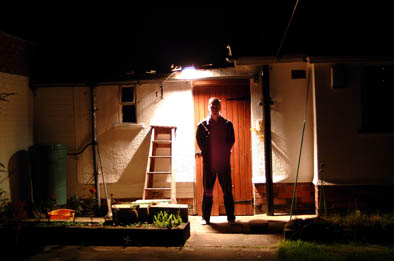Another step towards a darker night sky
2013 November 27
 On several dates in 2012 and early 2013, Bob Mizon and Martin Morgan–Taylor of the BAA Campaign for Dark Skies (CfDS), had meetings at the Dept. for Environment, Food & Rural Affairs (DEFRA) headquarters in London with representatives of the Institution of Lighting Professionals (ILP), the Campaign to Protect Rural England (CPRE) and DEFRA officials. These very positive encounters resulted, in spring 2013, in the publication of a nationally distributed light pollution information leaflet for retailers, advising purchasers of exterior lights on their proper choice and use (see JBAA June 2013 pp.135–136).
On several dates in 2012 and early 2013, Bob Mizon and Martin Morgan–Taylor of the BAA Campaign for Dark Skies (CfDS), had meetings at the Dept. for Environment, Food & Rural Affairs (DEFRA) headquarters in London with representatives of the Institution of Lighting Professionals (ILP), the Campaign to Protect Rural England (CPRE) and DEFRA officials. These very positive encounters resulted, in spring 2013, in the publication of a nationally distributed light pollution information leaflet for retailers, advising purchasers of exterior lights on their proper choice and use (see JBAA June 2013 pp.135–136).
In 2013 August, similar joint discussions led to a further step by DEFRA along the road to the abolition of light pollution in the UK. Within the structure of the Government’s new National Planning Policy Framework, DEFRA have published and are distributing to all local authorities a supplement to their National Planning Practice Guidance. This lays down the approach authorities should take towards exterior lights when granting planning applications.
An extract from the guidance states:
‘When is light pollution relevant to planning?
‘Artificial light provides valuable benefits to society, including extending opportunities for sport and recreation, and can be essential to a new development. Equally, artificial light is not always necessary, has the potential to become what is termed ‘light pollution’ or ‘obtrusive light’, and not all modern lighting is suitable in all locations. It can be a source of annoyance to people, harmful to wildlife, undermine enjoyment of the countryside or detract from enjoyment of the night sky. For maximum benefit, the best use of artificial light is about getting the right light, in the right place and providing light at the right time.
‘Lighting schemes can be costly and difficult to change, so getting the design right and setting appropriate conditions at the planning stage is important. In particular, some types of premises (including prisons, airports and transport depots where high levels of light may be required for safety and security reasons) are exempt from the statutory nuisance regime for artificial light, so it is even more important to get the lighting design for these premises right at the outset. Guidance, which sets out the full list of premises and explains how action can be taken by a local authority when artificial light is a statutory nuisance, can be found here’.
The full text can be found at http://planningguidance.planningportal.gov.uk/blog/guidance/light-pollution/when-is-light-pollution-relevant-to-planning/
The CfDS is much encouraged by the change of approach in recent years at DEFRA, and also among lighting professionals and local authorities, towards exterior lighting practices. Increasingly, these organisations are falling into line with astronomers and environmentalists, who try to convince the general public that ‘less can be more’, and that lighting is only really effective when used when and where it is strictly necessary.
To explore ways to support the CfDS in its essential work, please contact the author via the website www.britastro.org/dark-skies. We look forward to hearing from you!
Bob Mizon, Coordinator, BAA Campaign for Dark Skies
Photo: Martin Morgan–Taylor is the ‘suspicious character’ here beneath a properly aimed exterior light, revealing what is beneath it rather than dazzling potential onlookers. (Photo: Martin Morgan–Taylor)
| The British Astronomical Association supports amateur astronomers around the UK and the rest of the world. Find out more about the BAA or join us. |
